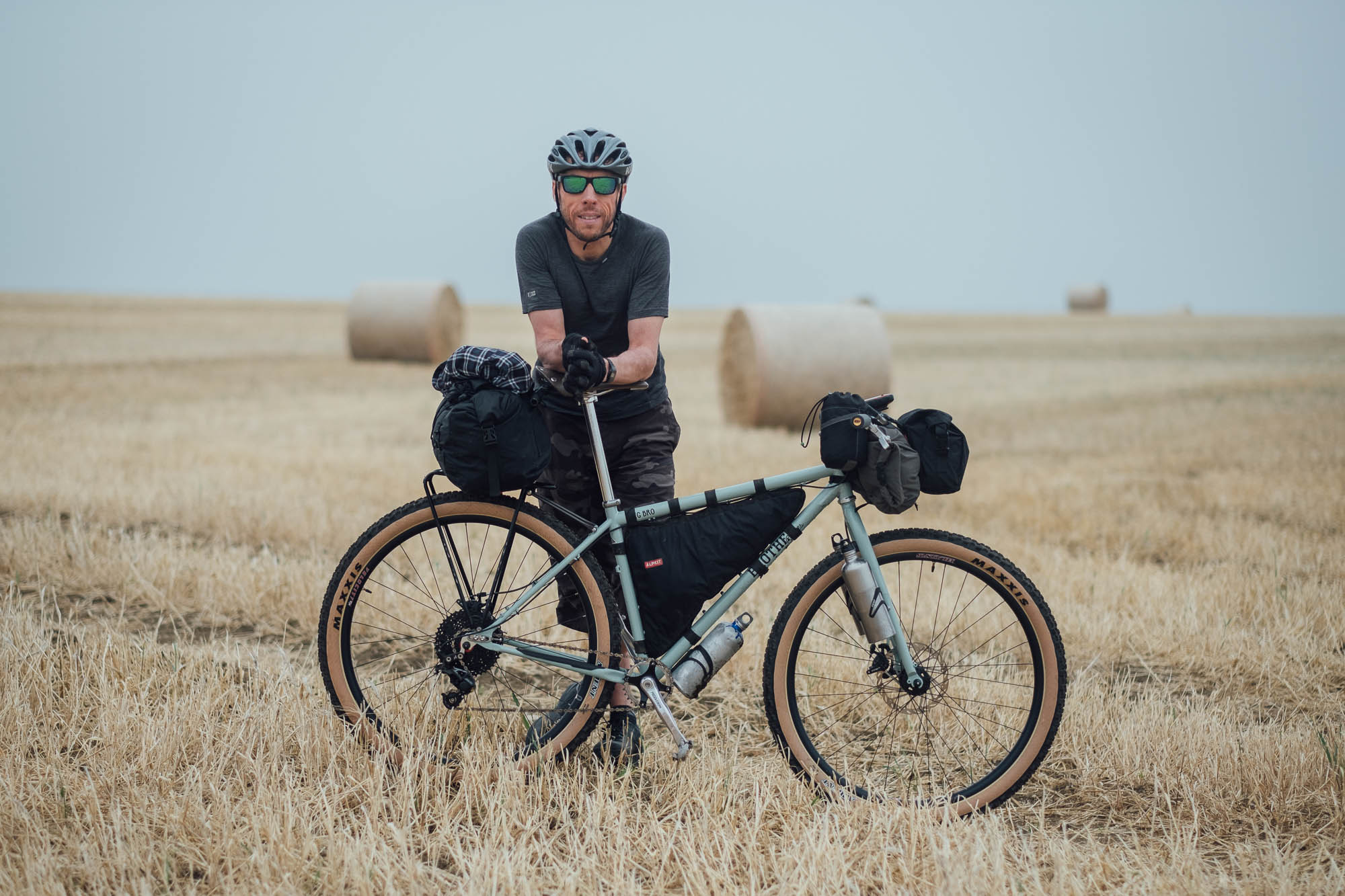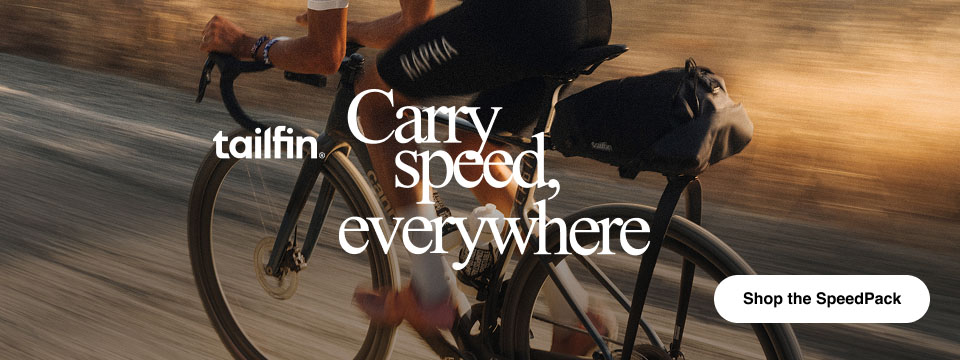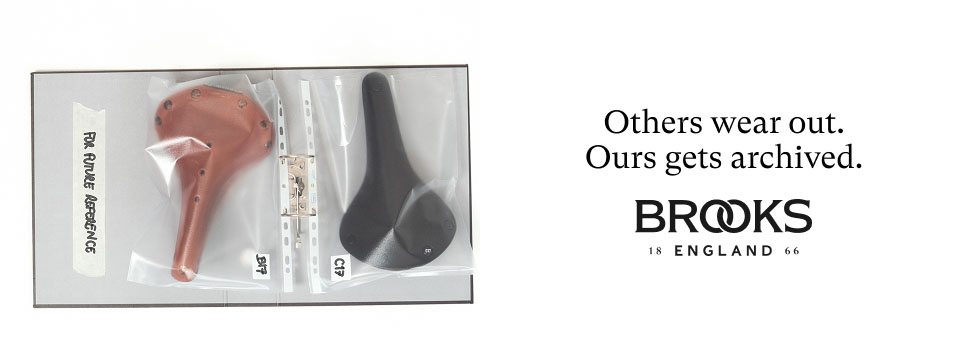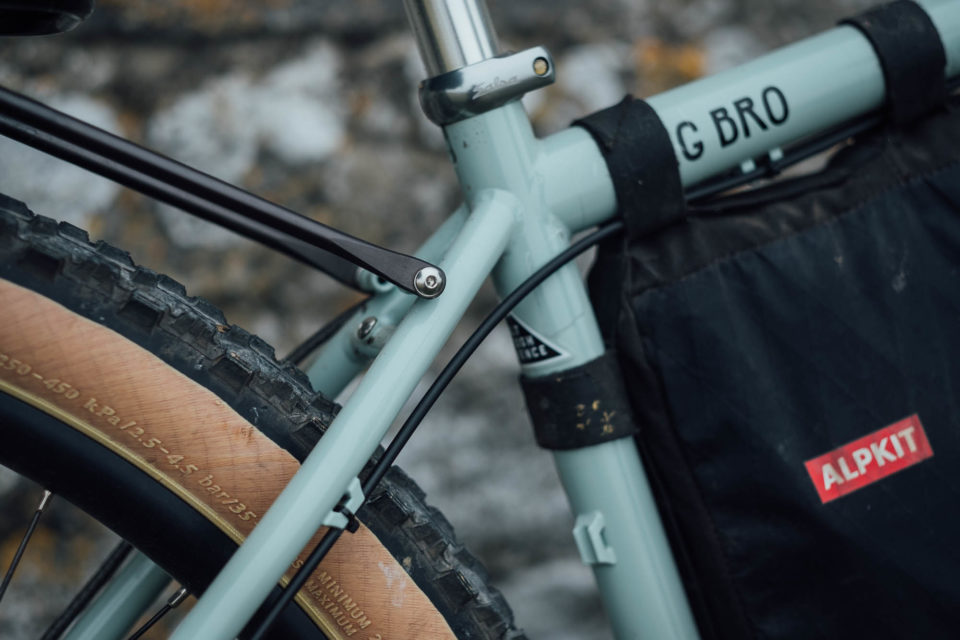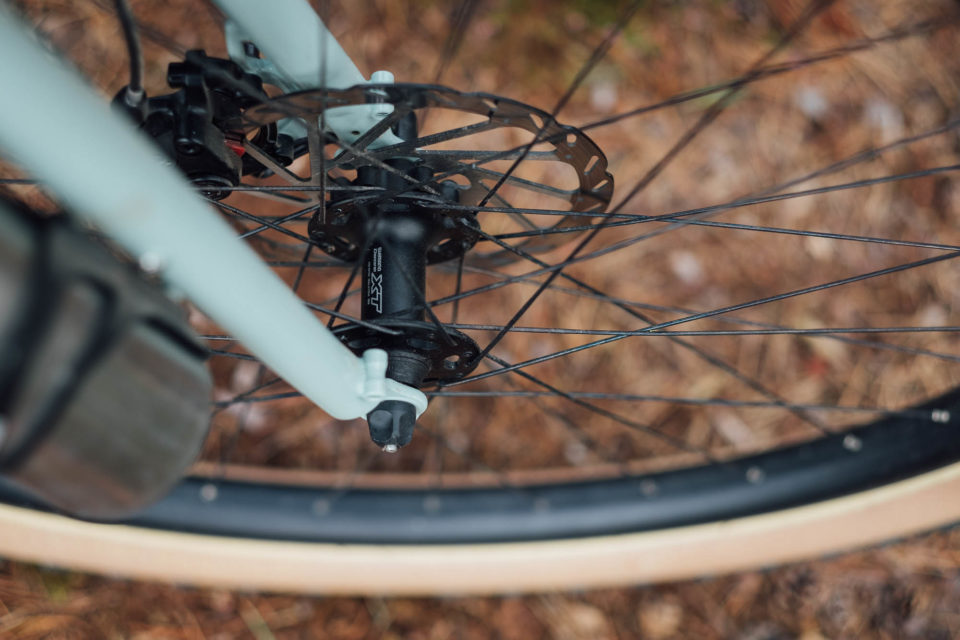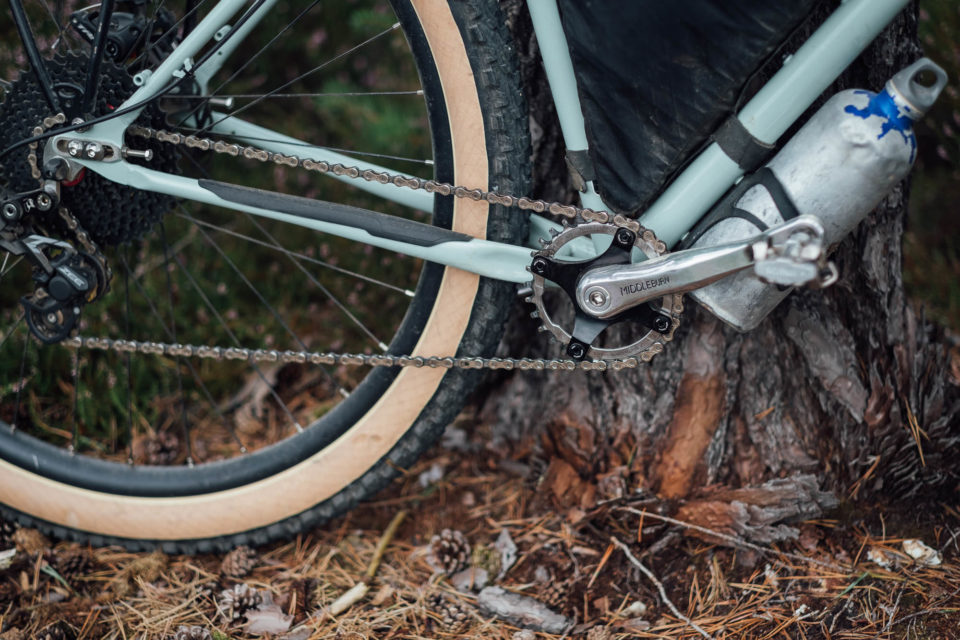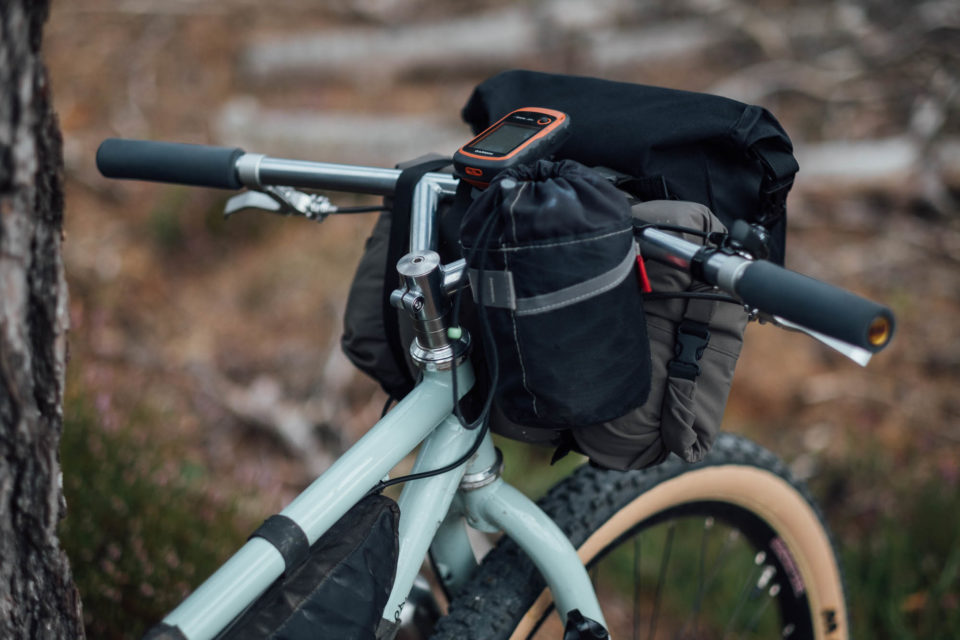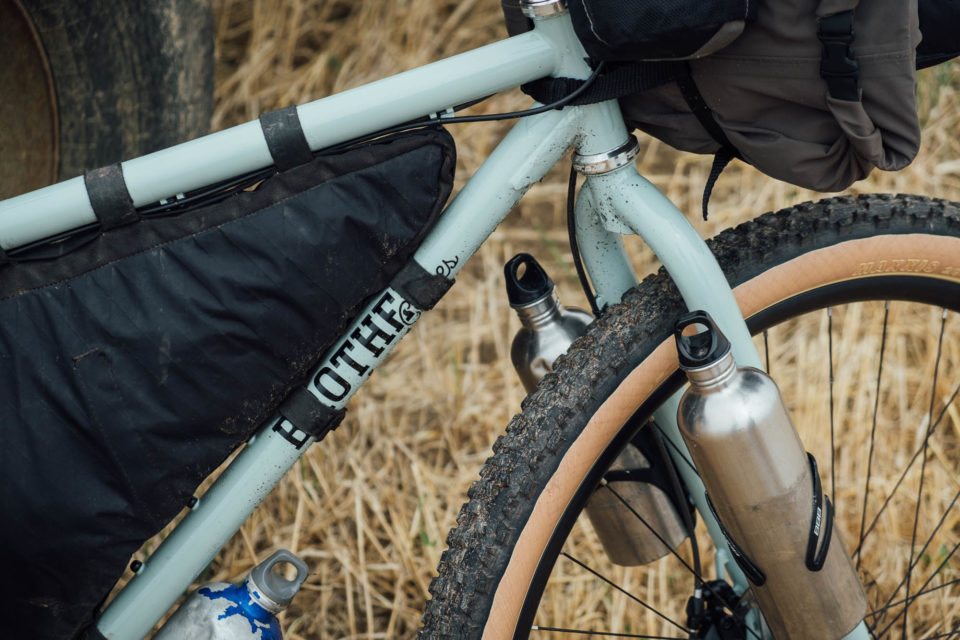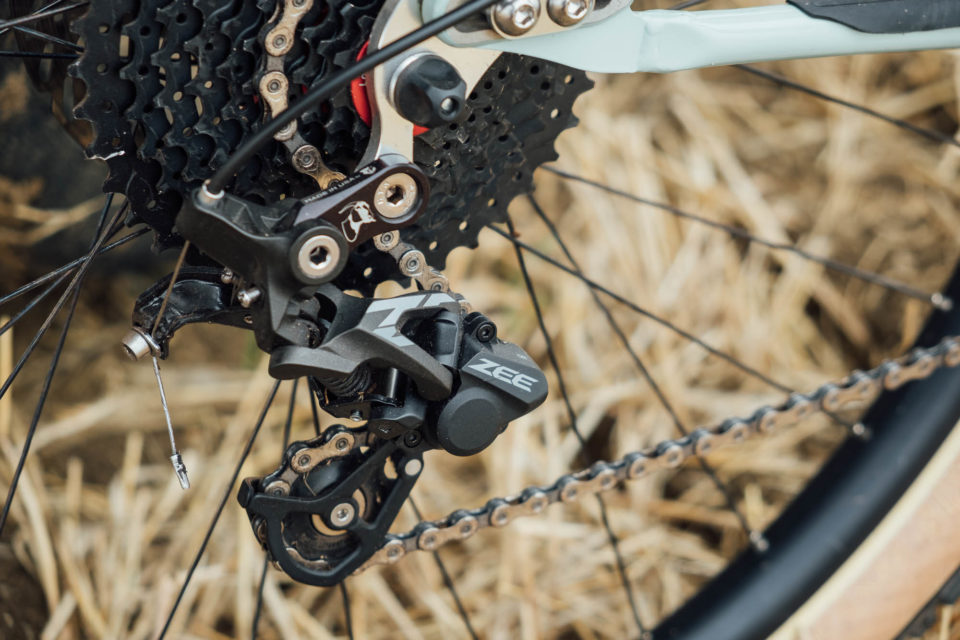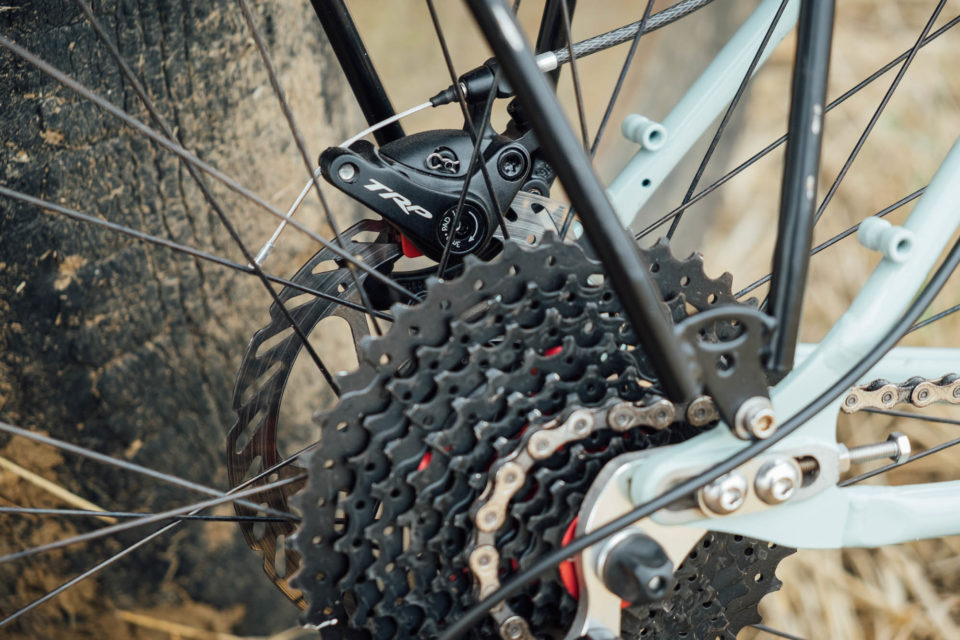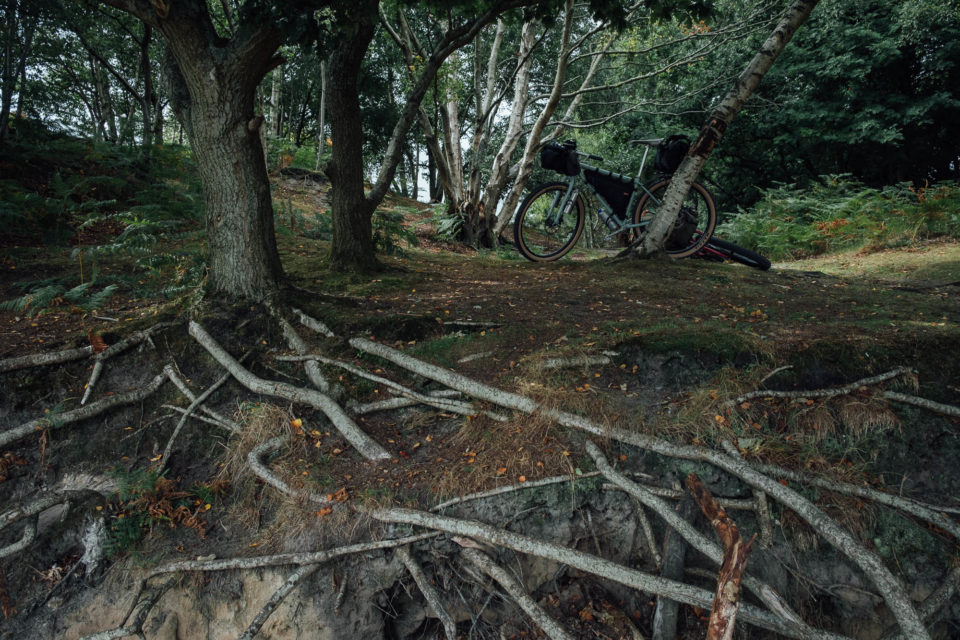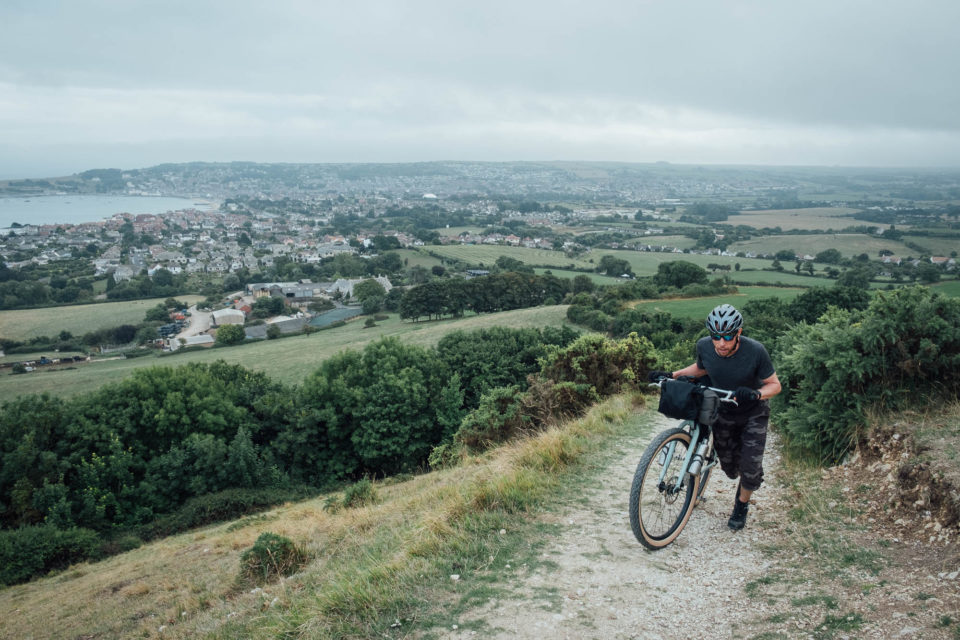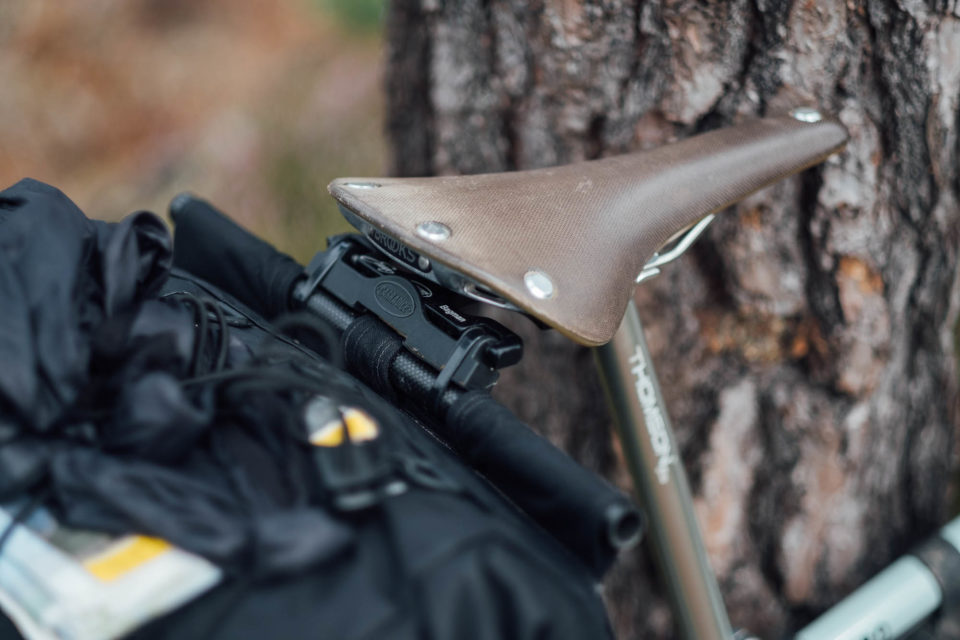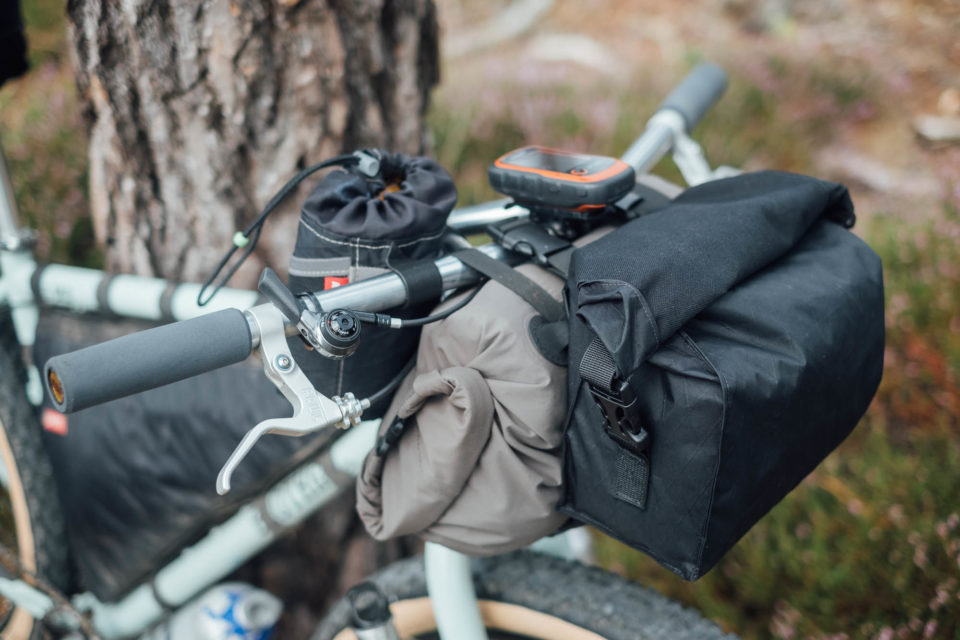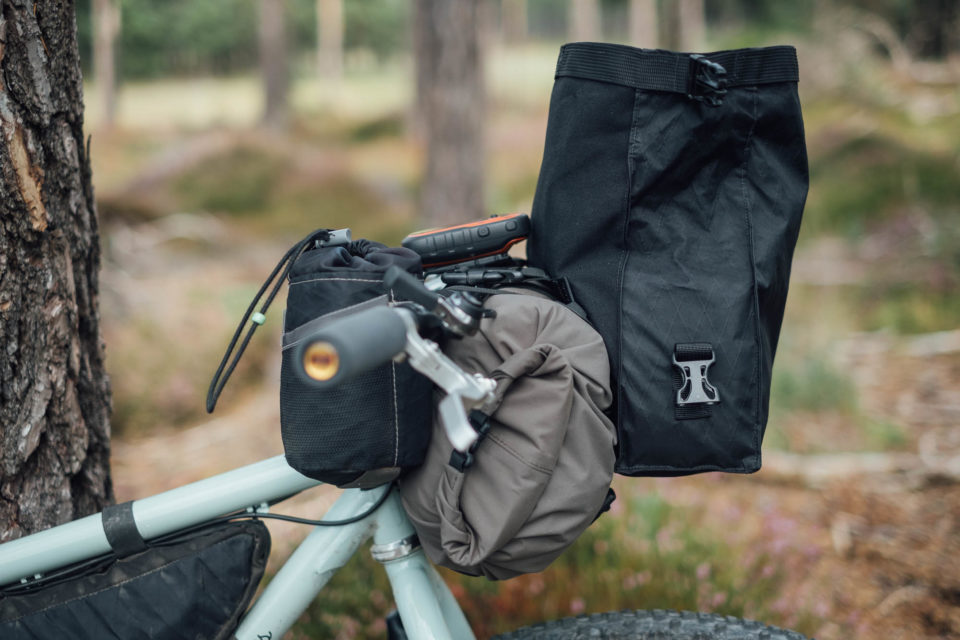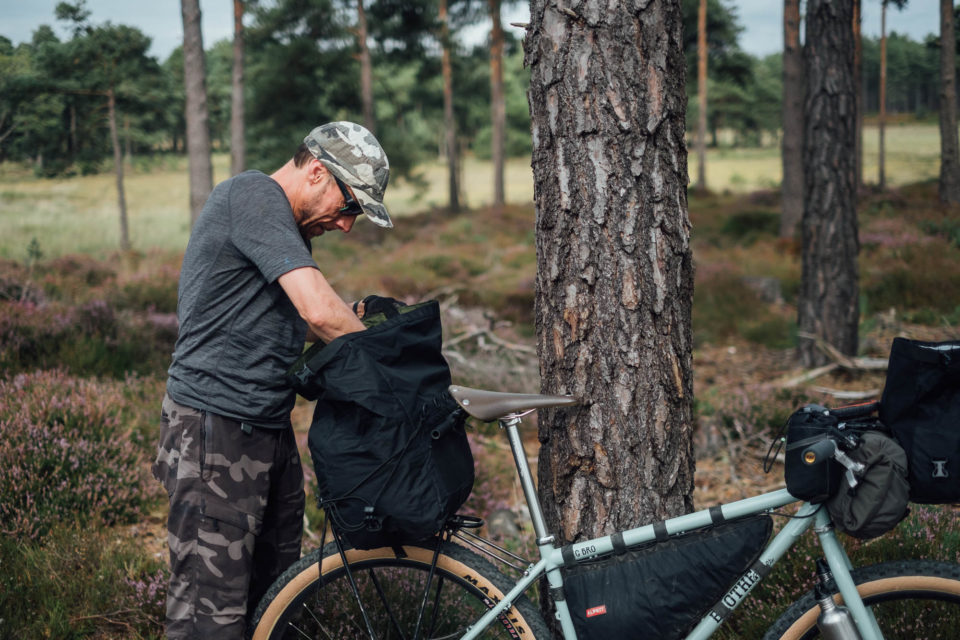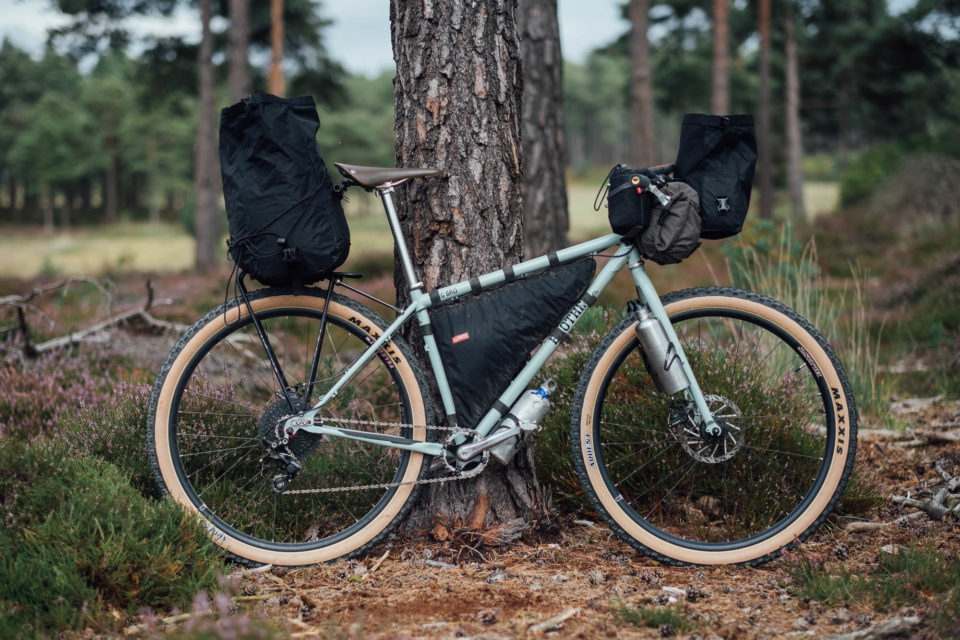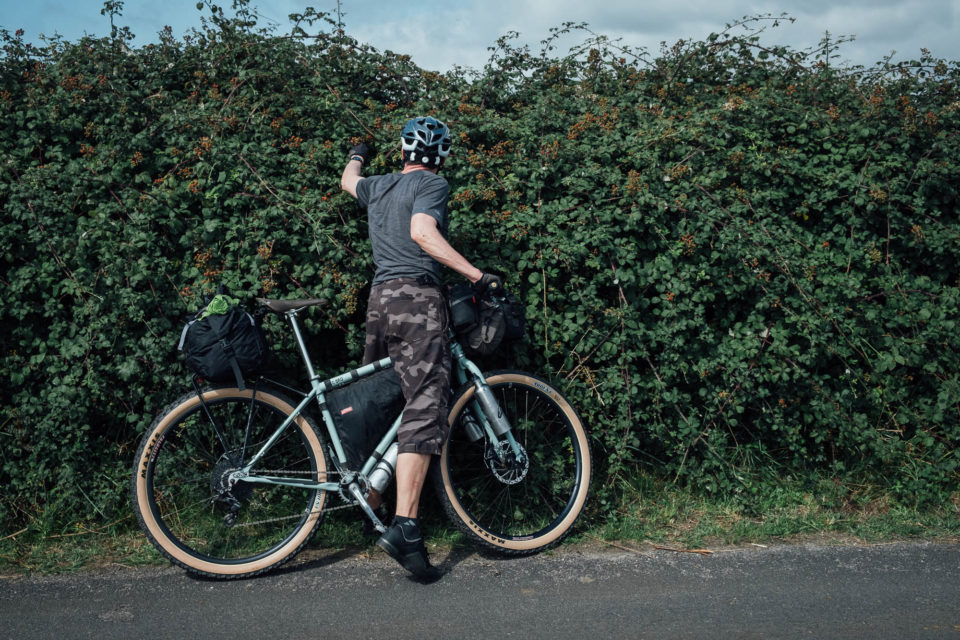Rider and Rig: Mike and his Brother Cycles Big Bro
In this edition of Rider and Rig, we chat with Mike Hayes from Cornwall, UK. As a former road racer and seasoned long-distance bikepacker, Mike talks us through his distinct Brother Cycles Big Bro build, and shares some insight into his experiences with cycling as a form of therapy for depression…
PUBLISHED Sep 5, 2018
I’ve known Mike for several years; we first met mountain biking in Exmoor National Park and more recently, we shared some miles in the Peruvian Andes. As an experienced bike tourer and an extremely accomplished street photographer (stay tuned for our upcoming Rider’s Lens feature), Mike is no stranger to combining bicycles and travel, and has a particularly keen sense of observation for the world around him.
During a weekend camping out on the Isle of Purbeck, Dorset, I asked him to share some thoughts about his Brother Cycles Big Bro and to compare it to his trusty Surly ECR, his travel bike of choice. I also asked him to share a more personal insight into how he has used cycling as a way of coping with the depression that’s affected him over the years. Read on for Mike’s thoughts on bikes, builds, and a whole lot more…
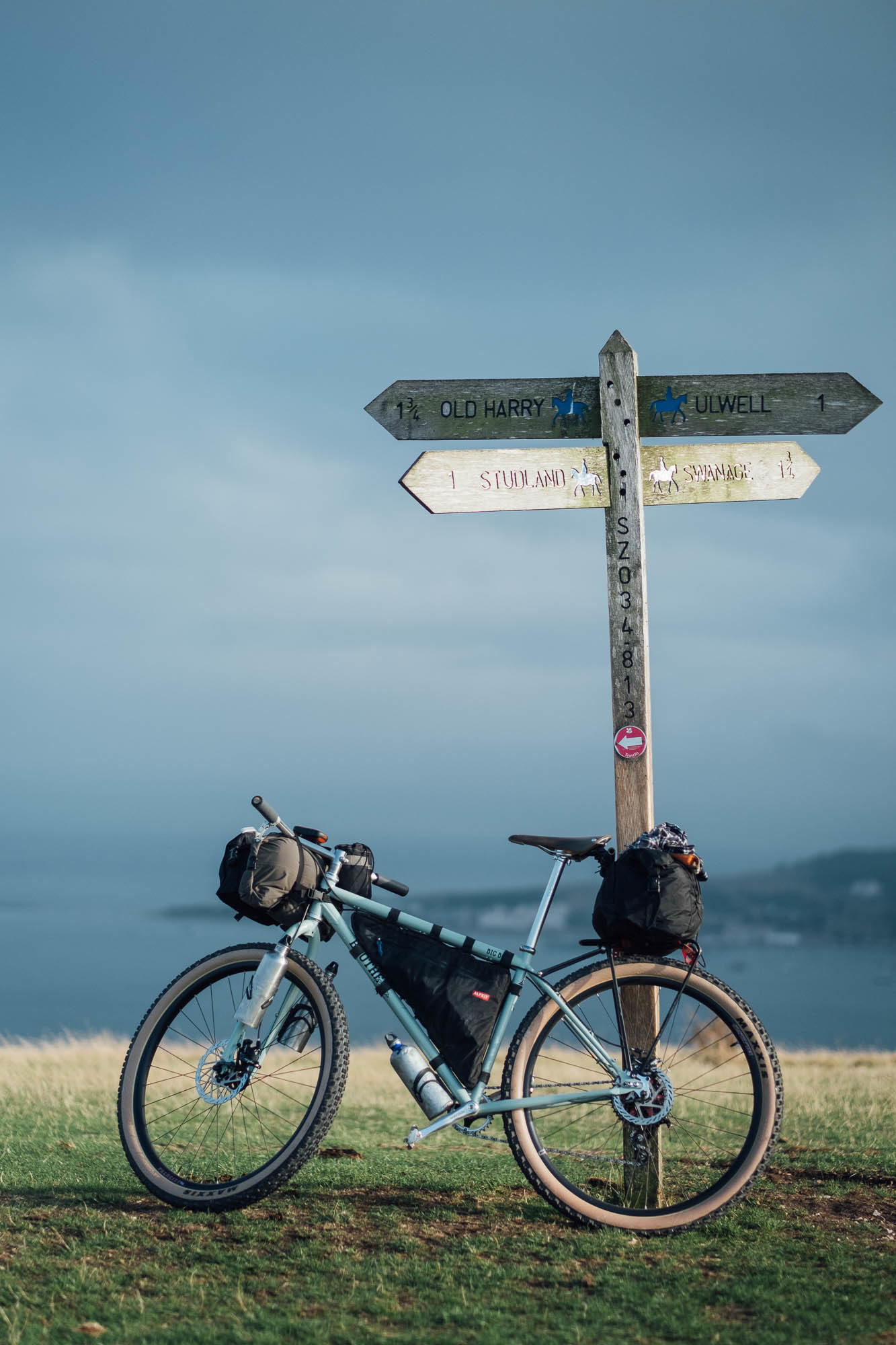
Tell us about the build of your Big Bro, the reasoning behind it, and how it fits with the long-distance tours you’ve ridden on a Surly ECR. What do you see as the differences between the two bikes and how you use them?
Given that I do have a Surly ECR, which has been doing terrific bikepacking service overseas and at home, there wasn’t any particular imperative behind the purchase of the Big Bro frame other than I liked the idea of something lighter and more nimble for singletrack duties, and that it is really quite pretty.
Rather, I saw in the frame something increasingly rare amongst new frames that I feared might disappear with the next iteration, market pressures being as they are. As something of a luddite, I’m quite a fan of old-fashioned, long-lasting standards like sealed square taper bottom brackets, good quality cup and cone hubs, and so on, and the Big Bro was something that I could easily hang a bunch of my old parts on without having to fork out more wedge than necessary. I might be a bit of a duffer, but I think there’s something really cool about being able to use older parts that have proven super durable over the years. And, more importantly, to use them to the point at which they are genuinely ‘storied’ and at the end of their life. A lot of the older stuff is also much more ‘hackable’ with more opportunity for fiddling and fettling.
The Big Bro is built with no concessions to weight. I’ve managed to progress significantly from my weight-weenie afflicted days, instead preferring simplicity, toughness, and what feels right for a frame. The Fairweather Nitto Bullmoose bar is a bit of a nod back to my time riding mountain bikes in the ’80s, and is superbly stiff, but in all honesty the primary reason it’s there is because I wanted an excuse to own one, and it’s more luck than anything that the width and reach are spot on. Drivetrain is a 1×10 because I’m probably a bit frightened of 11-speed stuff, and 1×1 isn’t really a great idea for bikepacking in hilly places. The sliding dropouts mean I can easily run it single-speed, which is great for when winter trails are slop.
I originally built the wheels to use on my ECR while riding in places where plus rubber is impossible to find should one trash a tyre. Velocity Blunt rims work okay with a plus-sized tyre and should be fine with 2” rubber if, say, that was all I could find. The hubs are some Shimano XT M756s I’ve had for a while. Not fancy, but tough, serviceable, and the same have served me very well for tens of thousands of kilometers with nothing more than an occasional strip and re-grease. The Paul brake levers were perhaps an indulgence, but they complement the build perfectly, especially alongside a single thumbie. There isn’t much else to say about the build choices, really. It has a Brooks Cambium on it because that’s what was in my parts box. I bought it for my then rough-stuff touring bike when Cambiums first appeared on the market; it’s been around a bit. While it’s a decent saddle, I probably bought it originally because on occasion, despite everything, I’m a sucker for pretty things. If there was one thing I could change about the frame it would be to stick on some fork crown eyelets for Surly 8 & 24-pack racks; I might braze some eyelets on one day.
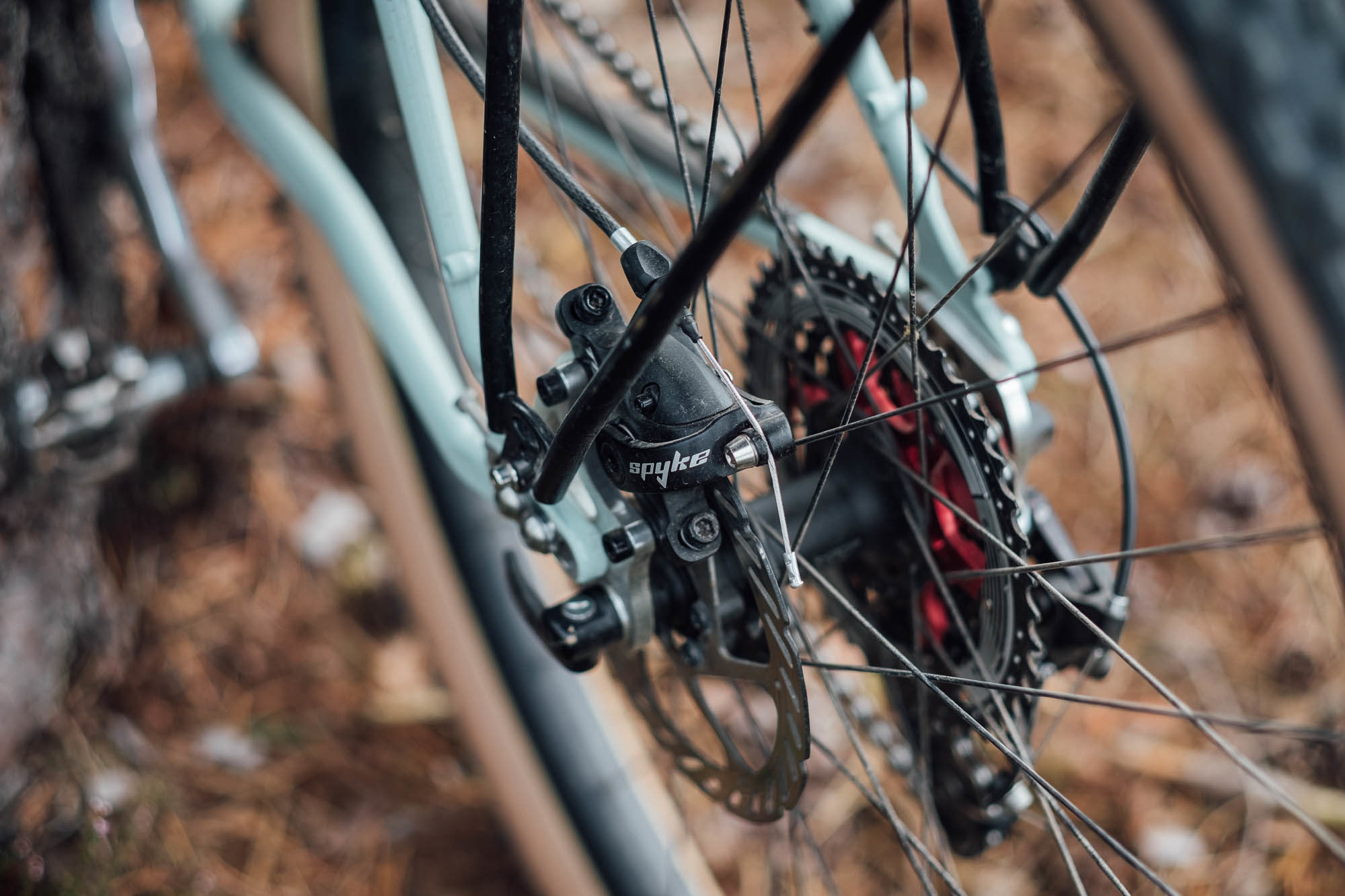
Unloaded, it’s terrific on twisty singletrack, something that doesn’t really go away too much when loaded up with a bit of camping clobber for a trip. When buying the frame, I also envisaged it working really well with a hard-wearing 2.2”-2.5” touring tyre for longer tours, but I’m not sure now that I’ll ever use it for that. I really like the comfortable armchair feel of the plus tyre on my ECR for that kind of long distance dirt road touring; it is first and foremost a touring bike after all. Instead, the Big Bro feels appropriate for more lightly loaded adventures involving a greater proportion of singletrack, technical trails, and so on where I’m not carrying gear for months on the road, and that may include opportunities to dump the bags for a day or two and just go play in the mountains. The Big Bro is also a perfect tool for hacking around local trails with mates when I’m not on the road.
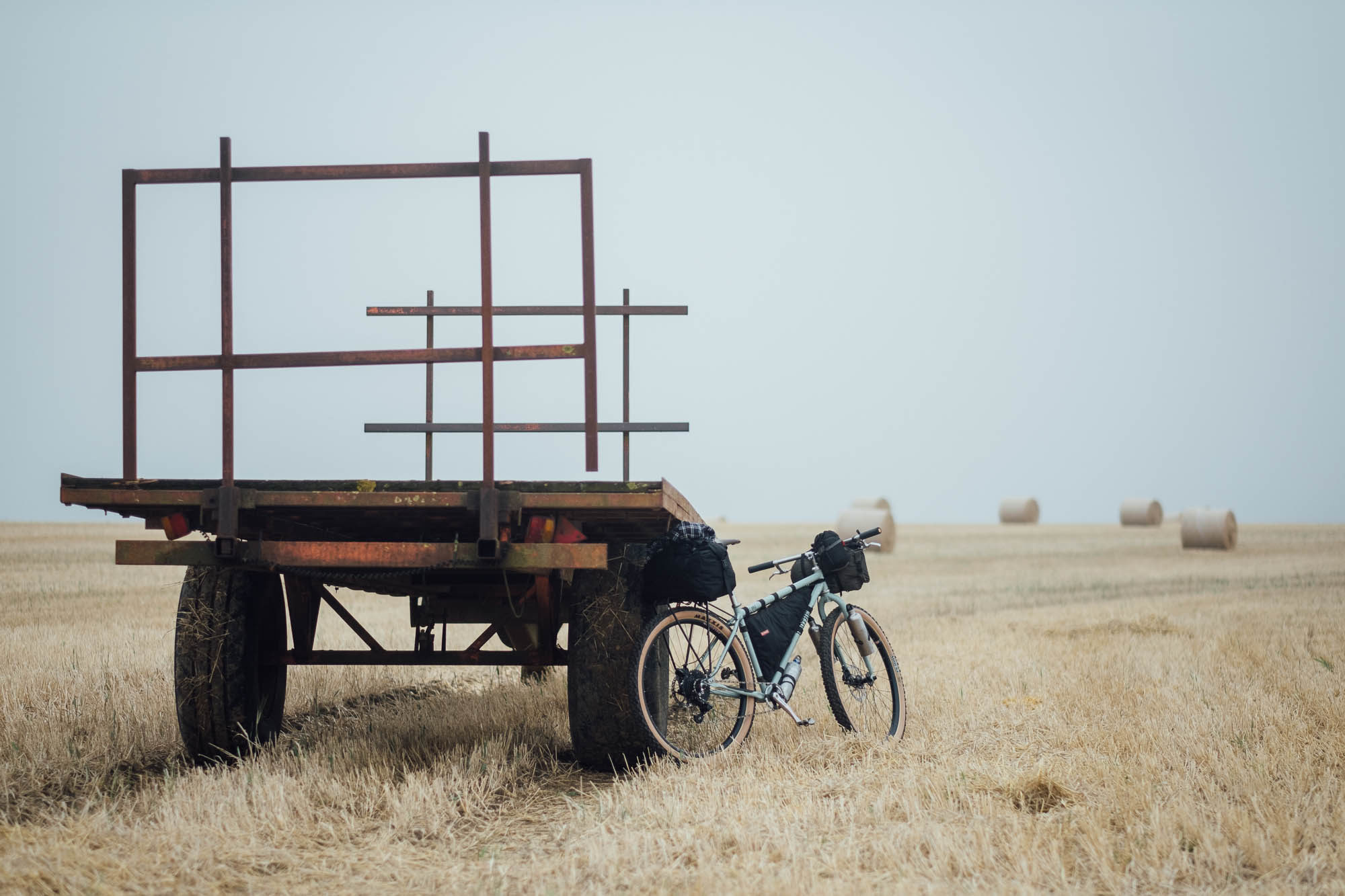
Mike’s Big Bro v1 Build Highlights
- FRAME: Brother Cycles Big Bro
- FORK: Brother Cycles Big Bro
- HEADSET: FSA Orbit MX. I like these. Good value and seem to last a long time
- HANDLEBAR: Fairweather Bullmoose – Nitto B903a
- STEM: N/A Integral with the bar
- SEATPOST: Thomson Elite inline
- SADDLE: Brooks Cambium
- GRIPS: ESI Silicone
- BAR PLUGS: ESI
- CRANKS: Middleburn RS7
- PEDALS: Shimano M540
- BOTTOM BRACKET: Shimano UN55
- CHAINRING: Wolftooth Stainless Steel, 104bcd 30T
- CHAIN: KMC something or other
- CASSETTE: Sunrace MS3 10spd 11-42
- SHIFTER: Microshift 10spd thumbie
- REAR DERAILLEUR: Shimano Zee + Wolftooth Goatlink
- BRAKES: TRP Spyke calipers with Paul Components Love Levers
- ROTORS: SRAM
- RIMS: Velocity Blunt
- HUBS: Shimano XT M756
- SPOKES: DT Comp
- TIRES: Maxxis Ardent 29 x 2.4
- COMPLETE WEIGHT (without bags): Not a clue, wasn’t really a priority.
Bikepacking Bags
- Handlebar Bag: Mike’s own, mirrorless camera-specific
- Frame Bag: Alpkit
- Saddle Bag: Mike’s own
What about your cycling life? As a former road racer, how have your interests changed and evolved?
Since my very first hand-me-down bike at four years old, bikes and cycling have always been an integral part of life. I grew up in a very rural area, so from an early age if I wanted to see friends outside of school then I had to ride my bike to the villages or farms where they lived. It’s possible that’s where the idea of bikes as tools for adventure came from. When you’re ten years old, bouncing across fields and paths a few miles from home on a single-speed Raleigh feels just as exciting as crossing a remote Himalayan pass. Regardless, from an early age a bicycle meant freedom and that has never changed. Despite not being cyclists, my folks thankfully didn’t discourage my two-wheeled forays, although my father must have felt like it at times, as much to his obvious disgust, I would ride my bike across the beach, through the sea, and then bring it home and slap paint on it.
Mountain biking became a thing for me in the mid-80s; terrific clifftop singletrack was everywhere in Cornwall and it was an era before folk out for a stroll would get a bit teasy and threaten cyclists with their walking sticks if seen riding on footpaths. I funded it largely through weekend and school holiday work, although my father did buy me a hard shell helmet and always insisted I wear it. It was a horrid thing, so I would leave the house with it on and then toss it in the bushes just around the corner for retrieval on my way home.
At university I discovered road racing, and also discovered that I was quite good at it; I enjoyed some decent success before work took me to Montréal for quite a few years. Road racing in the UK then was a somewhat ‘introverted’ activity with a distinct divide between that and the other kind of road cyclists – i.e. the tourists and audaxers, thought of by the racers as a weird, bearded, wool-jersey-wearing, rusty dynamo crowd. This was long before polished beards became a thing, of course.
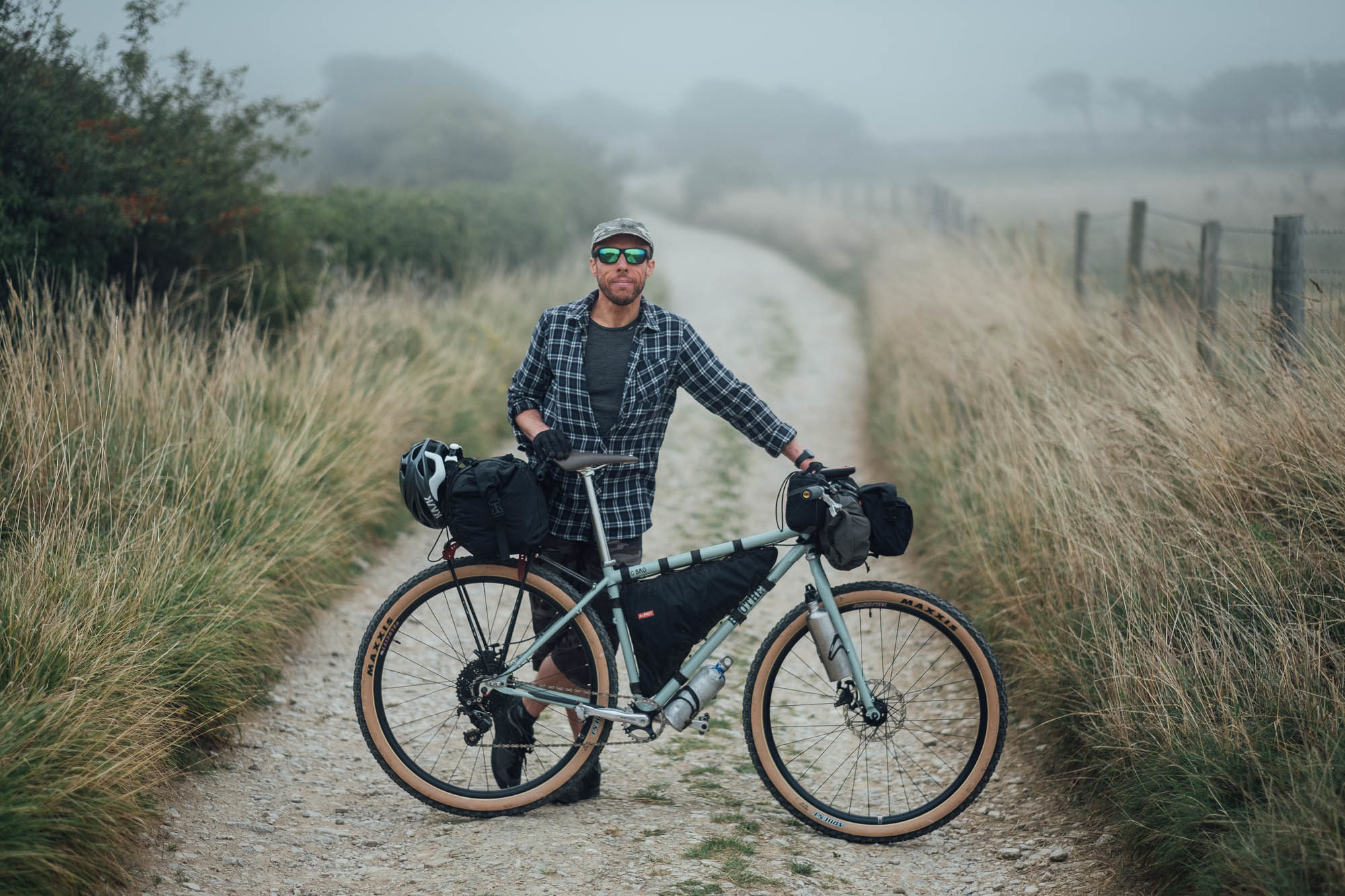
“In the end, however, my inner child reasserted itself fully and I reverted to just riding for the hell of it. Riding to spend time with friends, go fishing, or have a cook up on the beach, and riding to just lose myself completely for a day, a week, a month, or more.”
In Canada, I enjoyed the opportunities for winter backcountry travel by ski and snowshoe immensely, and a fat bike would have been in my quiver had such a thing existed. At that time I was also quite heavily invested in backpacking and mountaineering, and made mountain journeys around the world that way, but for some reason it didn’t occur to me to make such a journey by bicycle until almost twenty years ago. Probably because I thought it was a thing only done by bearded guys with wool jerseys and rusty dynamos.
My road ‘career’ ended when I realised that I just enjoyed riding far too much. Aside from touring, I continued with mountain bike events for a while, invariably longer ones with additional interesting navigation and/or overnight elements – Polaris Challenge, Iron Lemming, that sort of thing – because they were a ton of fun, had an element of backcountry adventure, involved beer and camping, and I could do them with friends. I also continued time-trialling until very recently with a local outfit, mainly because it was a friendly, social sort of thing, and I had the speed in my legs. In some respects, it seemed a waste not to.
In the end, however, my inner child reasserted itself fully and I reverted to just riding for the hell of it. Riding to spend time with friends, go fishing, or have a cook up on the beach, and riding to just lose myself completely for a day, a week, a month, or more. Inevitably, perhaps, my competitive, or ‘asshole’ side does show its face from time to time; I can still time trial pretty well, particularly if I’m on something like my ECR and see guys on posh road bikes ahead it’s hard to resist having a bit of fun when the legs are willing; 29”x3” Knards can be made to roll really quite quickly. The only thing I haven’t much experience with is recumbents. A French filmmaker travelling by ‘bent stayed with me via Warmshowers and let me take his for a spin once. It was not so great in Cornwall with its overwhelming abundance of steep hills. I sent him off one morning on a classic route along the north coast cliffs to Lands End. The first thing he said to me on his return was, “You bastard…”
During our weekend ride in Dorset, we talked about cycling as a form of therapy. What do you feel you gain from riding?
Cycling has played an important role throughout my life that isn’t necessarily obvious. I’m happy to talk about it because I know I’m not alone in this, and hiding it achieves nothing. From my late teens to my late 30s, I suffered from an at times severe depression, and my bike has been key in dealing with that. There wasn’t any help available to me at the time, so where some folk might have turned to drink and drugs – or just withdrawn completely – I went riding. In retrospect, much of the drive to race came from a desire to feel some self-worth in my life, and I could turn all the frustration and despair into results on the road. The intensity of my resolve was such that at times the physical demands I placed on myself could make me ill. I’d become very good at hiding my mental state from others, so I think I came across as somewhat odd; specifically, closed and hard to engage with. I chuckle now at a memory from 2004. I was waiting for my bike at a baggage claim in Italy en route to a race, and a guy came up to me and said “Excuse me, are you a racing cyclist?” I replied in the affirmative and asked how he knew. Probably being polite he said, “You just kind of have that intense look about you.” I was also skinny like a bloody rail, so perhaps it wasn’t so hard.
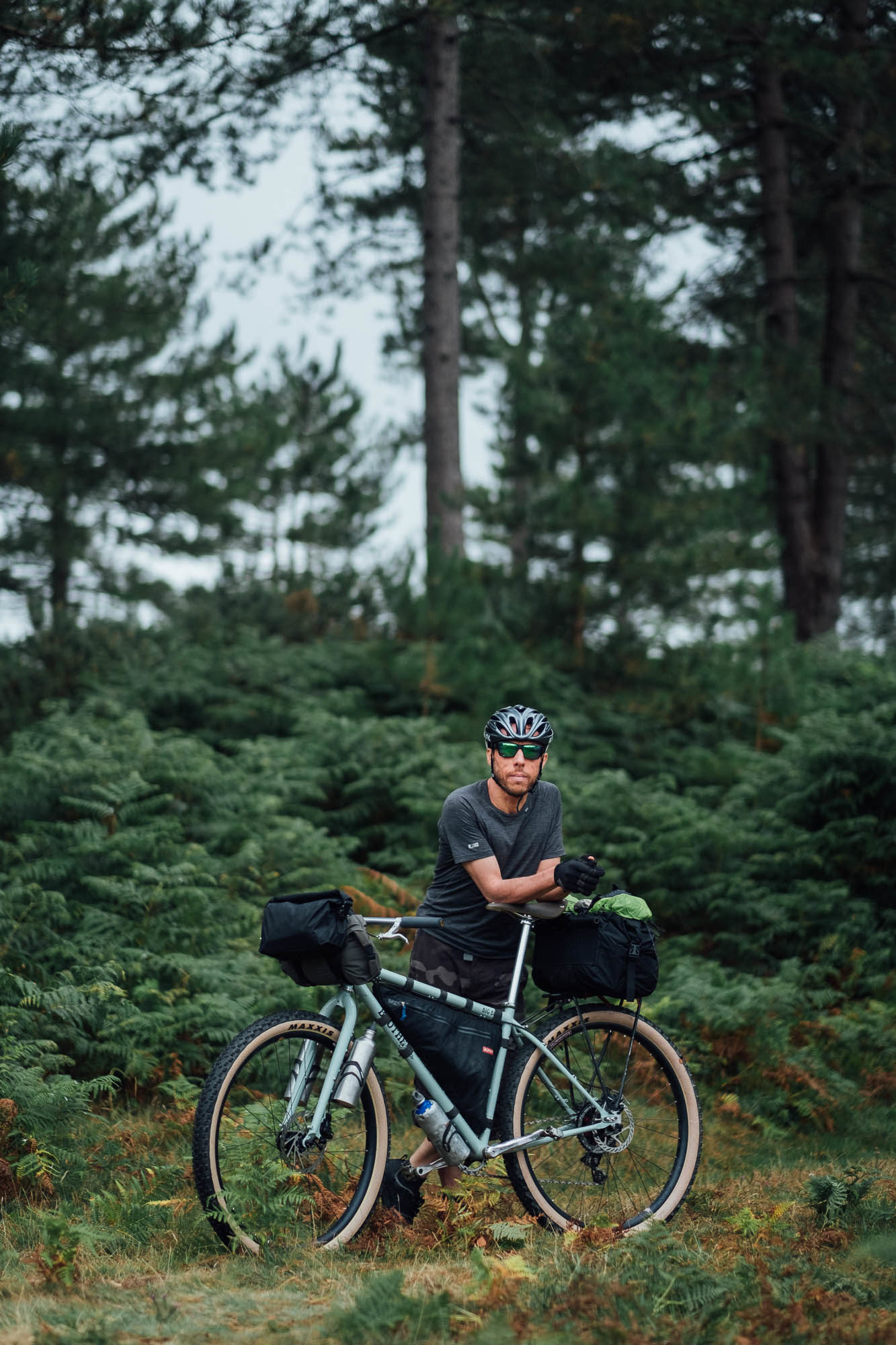
“I’ve learned to understand what’s going on with my mind, and I consider myself largely free of depression. My bike is absolutely key to maintaining that balance, and fits well with living simply and sustainably.”
It sounds like a terrible cliché, but travelling in remote places on foot, crampon, and eventually by bicycle, allowed me to relax and find my true self. I felt very much more at home with the simplicity of life on the road than I did at home trying to negotiate the sheer banality of what is generally accepted as normal life. I still do to a degree, but I’ve learned to understand what’s going on with my mind, and I consider myself largely free of depression. My bike is absolutely key to maintaining that balance, and fits well with living simply and sustainably. I still have plenty of wobbly days when I wake up feeling utterly hollowed out for no apparent reason; those I deal with by hopping on my bike and just riding. I like to head off with no particular plan other than to swing by some favourite wild spots where I can watch the waves or the seabirds wheeling, and just ride and ride until my legs feel like they’re going to fall off. There is no better fix, especially when the best advice my GP was able to offer when I last spoke to him about some help was essentially “try Google.” Oddly, perhaps I now view the years of struggling with depression a positive thing; I took from it a lot of lessons about myself and what was important in my life, and riding a bicycle has been both directly and indirectly responsible for shaping my life choices and bringing me to the better place in which I find myself now. It’s a continuing journey.
Where are you based, and what do you do when you’re not riding?
I’m now based back in Cornwall, where I grew up. As far as what I do, cycling and depression shaped that, too, as career stress was a significant element for a number of years. I was an aerospace engineer initially, specialising in aerodynamics and computational fluid dynamics, but ending up leading a very difficult flight simulation program. My employer had been pretty good with some periods of unpaid leave to go and make longer bike journeys, but in the end I just wanted more time to go riding and less stress, so eight years ago I left. It felt like a hard decision at the time, but in retrospect it was inevitable. I was earning more than I needed to live, so it was a simple transaction – one of swapping the privilege of paying more tax for more freedom. I had no plans for the future on leaving, other than getting back to Patagonia on my bike, after which I ended up working as a sea kayak expedition guide for a while. These days, I’m self-employed and use my experience in software design and systems architecture to develop bespoke web applications, amongst other things, for business.
Most of your bags are homemade; in some ways, they’re a modern take on the traditional saddlebag, using ultralight materials and carbon in lieu of canvas and a wooden dowel. I guess that’s something to do with your aerospace background… Tell us a little bit about them and the small business you’re setting up.
There’s now the germ of a sideline developing into bikepacking bags. I’ve teamed up with a mate who is a climber/caver and rope rescue expert; he’s been making bags and ‘software’ around that discipline, so now we’re working on some prototypes for the bags I want when I’m travelling by bike. We hope to make some designs commercially available in the not-too-distant future. The designs are a blend of traditional and modern; I like the versatility and features of traditional saddle bags, for example, and they’re great for carrying a laptop when working on the road, but I feel there is plenty of scope for making them lighter and incorporating a little bit of modern technology and some dual-use ideas. I also enjoy street photography while travelling by bike, so have been developing some designs that support the way I like to work with a camera while riding that may appeal to others.


As a self-confessed bicycle obsessive, can you share a quick rundown of your bike collection?
Hah, I’m not as bad as I used to be. Big Bro and ECR aside, I do have a few other bikes. From fat to skinny, there’s a Surly Big fat Dummy, a Cross-Check running the fattest rubber possible, a traditional/vintage lightweight tourer, and because Cornwall has some wonderful, quiet backroads to enjoy, there are a couple of fixed wheel road/gravel/touring bikes. I can already hear cries of “hipster,” but the fixed wheel started about 15 years ago as a way to minimise maintenance through the winter, and kept me fit on Cornwall’s hills. With some conditioning, I found a lack of gears to be no disadvantage at all. And I love the simplicity and meditative quality of it, so haven’t ridden gears except off-road or touring for a long time.
And to round this interview off – and a great weekend in the Purbeck – you mentioned that a Surly Big Fat Dummy is the latest addition to your bike collection. How does it slot into your philosophy of integrating cycling into everyday life?
Yep, after much procrastination, a Big Fat Dummy joined the family. I’ve been moving towards a car-free life since leaving my career, and I’m now at the point where essentially the only thing I use a car for locally is carting my sea kayak around. I’m not sure I’m at the point where I’m ready to, say, cycle a 40-50 mile round trip with an 18ft kayak and associated gear on a trailer to wherever my kayaking buddies might be meeting, particularly with a long day on the water in the middle. With the Big Fat Dummy, I can carry my surf kayak the few miles to my nearest surf beach, and even better partly use trails to get there. It has long made no sense to me that something as pleasurable as time in the surf has to be bookended by something as generally soul destroying as driving, and paying for parking, especially in summer holiday traffic. Riding complements the whole thing nicely and makes the outing complete in a way that driving cannot. That isn’t the only reason for owning it, however. Utility aside, I’m looking forward to the possibilities it opens up, like making a tour with it somewhere with kayak on board – exploring the remote breaks of Scotland’s Outer Hebrides would be a prime idea. Much hilarity could also be generated, I suspect, by sticking some 3” slicks on it and turning up to the odd local club TT. I think I might have to dig out my old skinsuit if I did that.
Nobody drives to work and gets out of their car thinking, “Wow, I really enjoyed that.”
Aside from being a blast to ride, the Dummy is a bike that challenges people’s preconceptions of what pedal power can achieve. My roadie friends comment on how glad they are that they don’t have to pedal it, while most other people appear to be utterly confused by it, and in the absence of something sensible to say generally, come out with dumb things like, “You need an engine on that thing,” or simply, “Why would you want that?” Policy and opinion in this country towards cycling is such that it is often perceived as either something you put $1,000 worth of fancy clothing on to do on a Sunday morning before getting back in your car on Monday, or something to be “suffered” as a means of getting to and from work. Missing are the wellness benefits of making cycling a regular part of daily life; individually, the tiny moments of enjoyment riding to, say, the shops, are trivial, but cumulatively the effect on wellbeing and life satisfaction are immense. Nobody drives to work and gets out of their car thinking, “Wow, I really enjoyed that.” Or, if they do, they’re in a minority, and probably a bit weird. I try to make time to ride everywhere, and even if I have to take an extra hour or three out of my day to make a journey I can travel via scenic backroads or trails and bring value to that time that more than outweighs any monetary value that could be assigned to it, especially in the context of maintaining my mental health. Make a journey in a car and that time has no value, it’s lost, empty time that brings no benefit to the day, or your life, at all.
You can find out more about Mike’s adventures and keep up to date with progress on his new bags by checking in on his website. Or, enjoy photos from Cornwall and beyond by following him via his excellent Instagram @seasurfdirt.
Please keep the conversation civil, constructive, and inclusive, or your comment will be removed.







